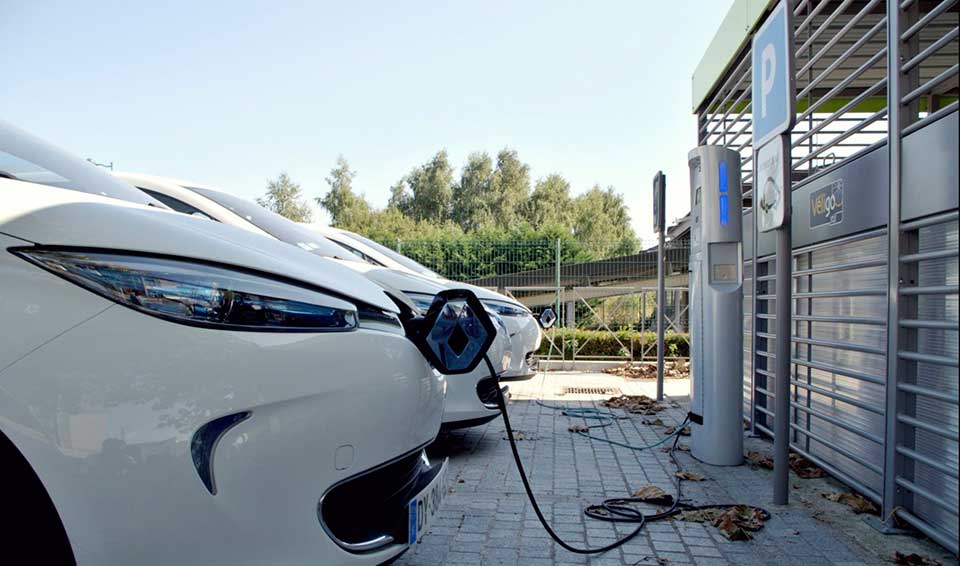
The United States Department of Transportation (USDOT) has tightened fuel mileage standards for vehicles in an effort to transform the country’s auto market into one dominated by more climate-friendly electric vehicles.
The new standards set by the National Highway Traffic Safety Administration (NHTSA) will lower fuel costs by more than $23 billion while reducing pollution, a press release from USDOT said.
“Not only will these new standards save Americans money at the pump every time they fill up, they will also decrease harmful pollution and make America less reliant on foreign oil. These standards will save car owners more than $600 in gasoline costs over the lifetime of their vehicle,” said U.S. Secretary of Transportation Pete Buttigieg in the press release.
The new standards will save nearly 70 billion gallons of gas through 2050 and prevent more than 782.6 million tons of carbon dioxide emissions by mid-century.
“When Congress established the Corporate Average Fuel Economy program in the 1970s, the average vehicle got about 13 miles to the gallon. Under these new standards, the average light-duty vehicle will achieve nearly four times that at 50 miles per gallon,” said Sophie Shulman, NHTSA deputy administrator, in the press release.
The final rule will increase fuel economy by two percent annually for passenger cars with model years 2027 to 2031 and light trucks with model years 2029 to 2031. This will mean that by model year 2031, the average light-duty vehicle will get roughly 50.4 miles per gallon.
The new rules are not as strict as last year’s USDOT draft rules, which would have required that automakers make passenger cars with an average of 66.4 miles per gallon and light trucks with a standard 54.4 miles per gallon before 2032, reported The New York Times. The proposal was weakened following lobbying from automakers.
Under the new final rule, van and heavy-duty pickup truck fuel efficiency will go up by 10 percent each year for vehicles with model years 2030 to 2032, while model years 2033 to 2035 will increase by eight percent annually. This will mean an average of roughly 35 miles per gallon fleetwide by model year 2035, resulting in a savings of more than $700 in gasoline costs for van and heavy-duty pickup owners.
“President Biden’s economic and climate agenda has catalyzed an American clean energy and manufacturing boom,” said national climate advisor Ali Zaidi in the press release. “On factory floors across the nation, our auto workers are making cars and trucks that give American drivers more choices today than ever before. These fuel economy standards, rigorously aligned with our investments and standards across the federal government, deliver on the Biden-Harris Administration’s promise to build on this momentum and continue to spur job creation, and move faster and faster to tackle the climate crisis.”
NHTSA consulted with unions, consumers, environmental advocates, states, automakers, and other stakeholders in the process of crafting the final rule.
The new rule sets standards consistent with the direction of Congress regarding the conservation of fuel and promotion of the country’s automotive manufacturing and energy independence, while at the same time giving the automotive industry flexibility on how to reach those goals.
“Though NHTSA does not consider electric and other alternative fuels when setting standards, manufacturers may use all available technologies – including advanced internal combustion engines, hybrid technologies, and electric vehicles – for compliance,” the press release said.
The updated fuel economy standards set by NHTSA complement similar vehicle fleet emissions standards set by the U.S. Environmental Protection Agency (EPA). NHTSA worked with the EPA to improve its standards while minimizing the costs of compliance, consistent with relevant statutory factors.
“These new fuel economy standards will save our nation billions of dollars, help reduce our dependence on fossil fuels, and make our air cleaner for everyone. Americans will enjoy the benefits of this rule for decades to come,” Shulman said.
Reposted from EcoWatch.










